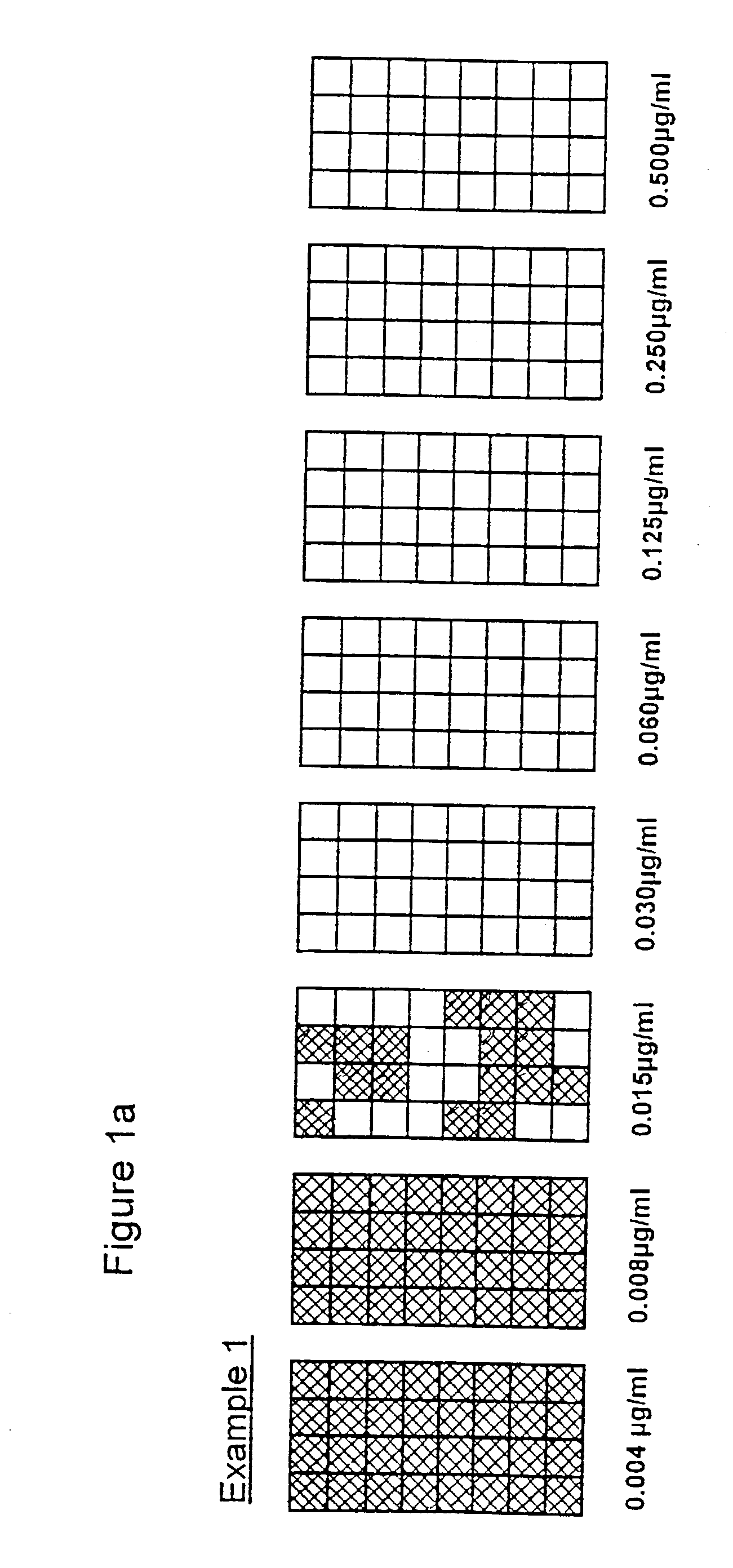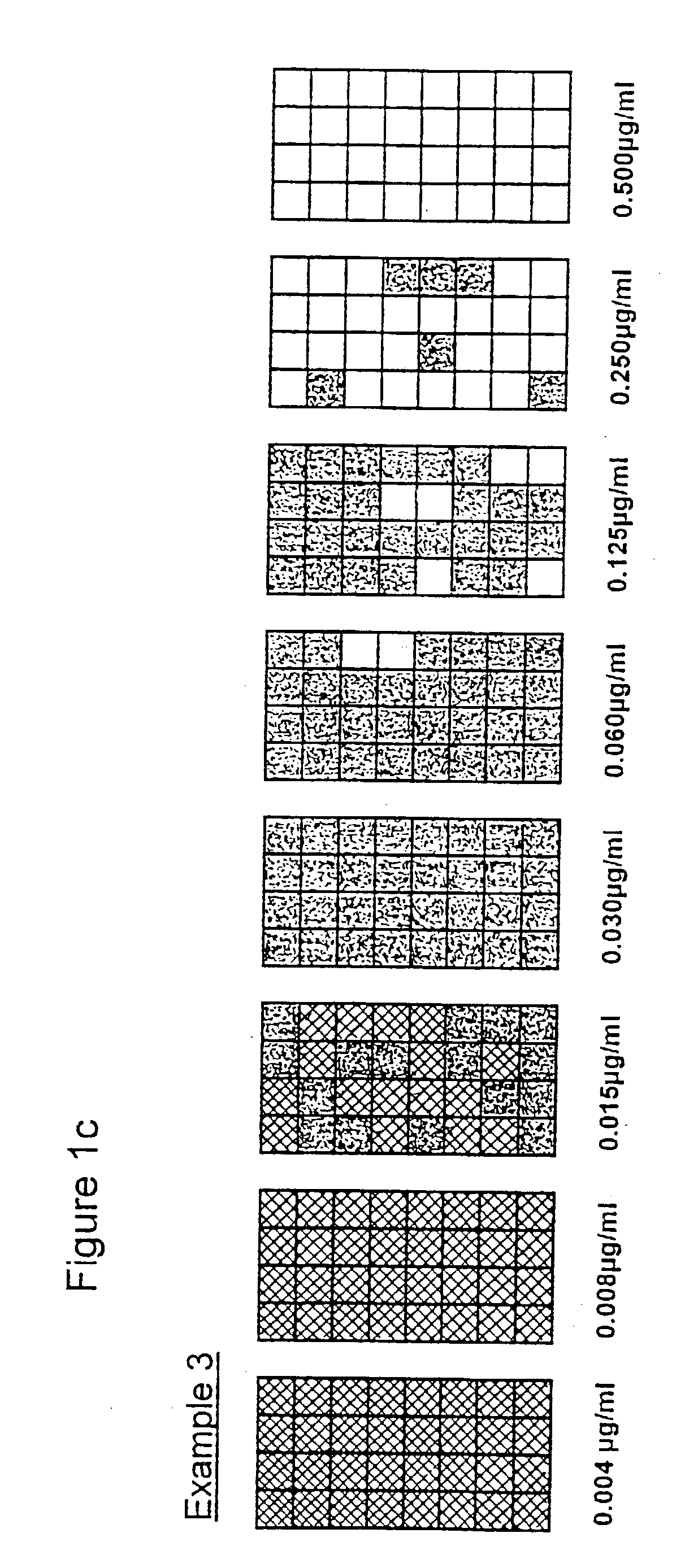Microbial growth variations
a technology of growth variation and microorganisms, applied in the field of microorganism identification and antibiotic sensitivity, can solve the problems of exacerbate the situation, the ability of rapid tests is limited to the response of the main population, and the problem of far more substantial rapid tests than initial indications, etc., to achieve the effect of simplifying the operation of the test system
- Summary
- Abstract
- Description
- Claims
- Application Information
AI Technical Summary
Benefits of technology
Problems solved by technology
Method used
Image
Examples
Embodiment Construction
1-4
[0052] Format: In general terms the entire series of tests followed the methods for use of microdilution plates. Each of the eight antibiotic concentrations was represented by 32 replicate wells, thus amounting to 8.times.32[256] test wells in a three plate array.
[0053] Antibiotic: Penicillin
[0054] Organisms: Two cultures of Staphylococcus aureus, with one isolated from plates containing penicillin supplemented agar to provide cells of known .beta. lactamase activity.
[0055] Inoculum: A target level of 10.sup.2 cells / wells was selected to test an adequate number of organisms within each treatment. In the examples 2-4 the aim was to include an increasing proportion of resistant / .beta. lactamase positive cells. Preparation by dilutions at these levels will undoubtedly be prone to errors.
[0056] Incubation: Sealed plates incubated for 5 hours at 37.degree. C. [previously shown to provide significant growth]. At the end of incubation well contents [50403 .mu.l] were transferred to 200 ...
PUM
 Login to View More
Login to View More Abstract
Description
Claims
Application Information
 Login to View More
Login to View More - R&D
- Intellectual Property
- Life Sciences
- Materials
- Tech Scout
- Unparalleled Data Quality
- Higher Quality Content
- 60% Fewer Hallucinations
Browse by: Latest US Patents, China's latest patents, Technical Efficacy Thesaurus, Application Domain, Technology Topic, Popular Technical Reports.
© 2025 PatSnap. All rights reserved.Legal|Privacy policy|Modern Slavery Act Transparency Statement|Sitemap|About US| Contact US: help@patsnap.com



